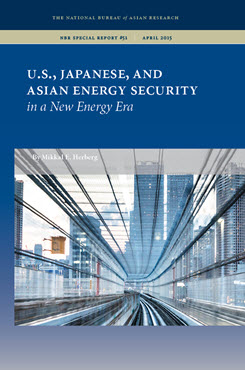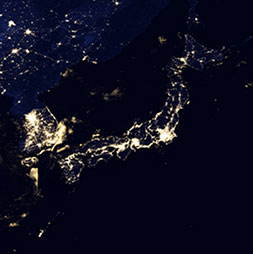NBR Special Report no. 51
U.S., Japanese, and Asian Energy Security in a New Energy Era
This report analyzes major strategic and energy market developments that are reshaping the Asia-Pacific’s energy security environment and offers recommendations for how the region can forge a new, more robust energy security architecture.
EXECUTIVE SUMMARY
MAIN ARGUMENT
The boom in U.S. and Canadian production of shale gas and tight oil has led to a steady decline in U.S. dependence on imported Middle East oil and a new era of relative energy abundance for North America. Meanwhile, China and the rest of developing Asia have joined Japan and South Korea as major importers of oil and natural gas from the Persian Gulf. When coupled with growing disillusionment in the U.S. over the costs of its commitments in the Middle East, this suggests that the existing “Pax Americana” energy security architecture may no longer fit. As a result, countries across the Asia-Pacific need to adjust their approaches to energy security to reflect new realities. The region needs to forge a new energy security architecture that is less dependent on the U.S. and more based on regional collaboration and shared efforts. This will require much greater strategic collaboration, improved energy cooperation institutions, and more adaptable and robust energy markets. Ultimately, ensuring reliable and affordable oil and LNG supplies remains a shared challenge across the Asia-Pacific.
POLICY IMPLICATIONS
- The U.S. and Japan, working alongside China and the rest of Asia, should lead in developing this new energy security architecture.
- Washington, Beijing, Tokyo, and other stakeholders need to find ways to collaborate on promoting stability in the Middle East and on ensuring the security of energy sea lanes from the Persian Gulf to Asia. An approach modeled on the Shangri-La Dialogue could help build confidence and advance this dialogue.
- The Asia-Pacific must build regional energy security institutions that are capable of addressing potential oil and LNG supply disruptions from the Middle East. The 2006 Five-Country Energy Ministers Meeting would provide a good template for developing such institutions.
- The Asia-Pacific needs to build more flexible energy markets, reduce state intervention, and accelerate domestic reforms to make its economies more adaptable to energy shocks and price changes. In particular, LNG markets and contracts need to be much more flexible and affordable.



